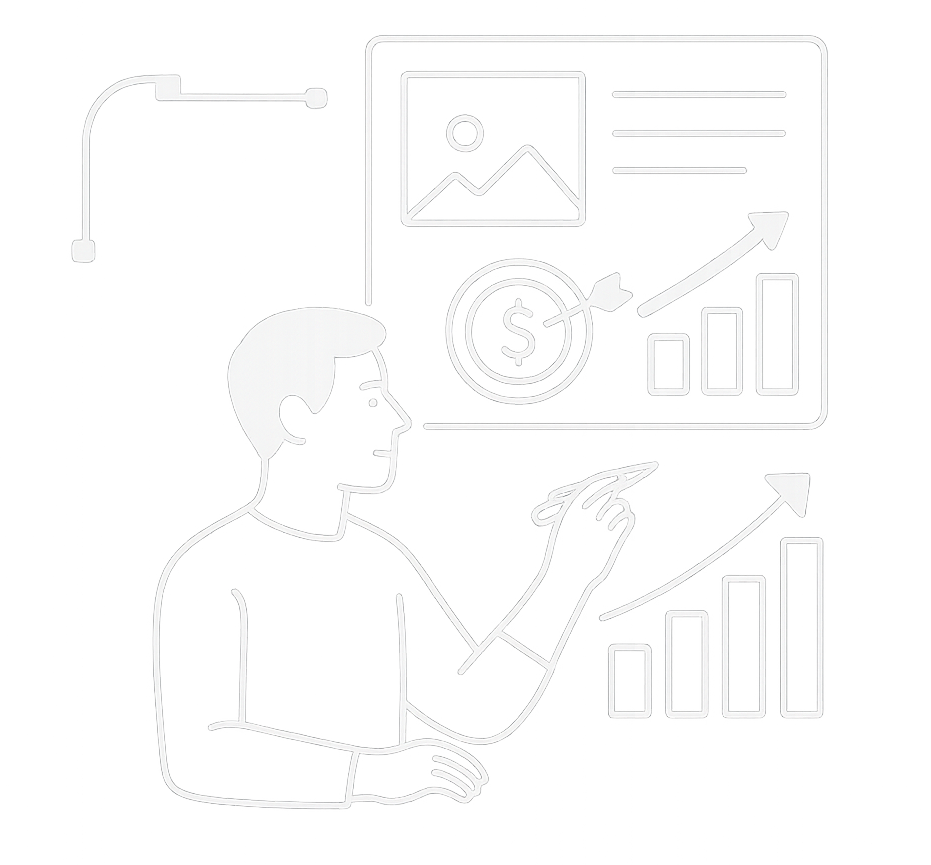“It looks stunning… but what does it actually do for our conversion rate?”
That’s what one investor asked after reviewing the beautifully designed—but underperforming—app of a funded startup. The team had obsessed over visual perfection (colors, animations, typography) while overlooking what truly matters: business impact.
What is Designing for Business Outcomes?
Designing for business outcomes means creating user experiences that drive measurable results—like revenue, retention, or efficiency—rather than just visual appeal.
Introduction
At Crebos, we’ve seen it all—gorgeous UIs that never get used, and bland dashboards that drive millions in revenue. In 2025, startups don’t have the luxury of pixel-perfect dead weight. Every design decision must tie directly into growth, profitability, or strategic traction.
This article breaks down how to think beyond aesthetics. You’ll learn frameworks to align design with business goals, real-world examples, and common pitfalls. Whether you’re scaling a SaaS product, building a mobile app, or launching an AI platform, this mindset separates pretty tools from powerful ones.
TL;DR
- Design for conversions, retention, and productivity, not just visuals.
- Use frameworks like Jobs to Be Done and North Star Metric Mapping.
- Validate impact via user testing, analytics, and fast iterations.
- Avoid design-by-committee and over-polishing.
- Tie UX metrics to key KPIs from day one.
Why Visual-First Design Fails
Design that exists only to “look good” creates friction for users and blind spots for the business.
Common issues:
- Long onboarding due to over-complicated UI.
- Aesthetic-focused navigation hides core functionality.
- Metrics like NPS and DAU drop post-launch due to unmet user needs.
“Design without purpose is decoration.”
— Crebos Design Team
What Does Outcome-Focused Design Look Like?
Ask these questions:
- What user action are we encouraging?
- What metric improves when this design works?
- How quickly can we validate its impact?
Examples:
- In a digital banking app, reducing onboarding time from 5 min to 90 sec increased conversions by 38%.
- A B2B dashboard redesign that surfaced ROI metrics above the fold led to a 22% increase in upsells.
Frameworks That Bridge Design and Outcomes
1. Jobs to Be Done (JTBD)
Ask: “What job is the user hiring this design to do?”
Ideal for MVP Development and user story mapping.
2. North Star Metric Mapping
Align major UI decisions to your North Star Metric—the one metric that matters most.
Example: For a subscription tool, NSM = “Active trials converted to paid.”
Design should emphasize early value.
3. Funnel & Behavior Analytics
Use tools (e.g., Amplitude, Mixpanel) to analyze drop-offs and friction points.
Pro tip: Incorporate insights during wireframing or UX audits.
Real-World Examples (2025)
Crebos – Henri App Redesign
Reduced steps in “split expense” flow from 6 to 3 → Monthly Active Users rose 47% in 60 days.
Read full case study →
Notion
Minimalist interface improves “speed of thought” and task completion. Form = Function.
Shopify
Uses progressive disclosure to simplify workflows, improving merchant success.
What Not To Do
- Don’t over-prioritize polish. Speed > Perfection.
- Don’t overdesign early MVPs.
- Don’t confuse delight with clarity—every illustration, animation must aid comprehension.
Don’t measure success by UI feedback alone. Use trial conversion, adoption, churn, etc.
Download the free Outcome-Driven Design Scorecard
A simple 1-pager to assess if your product design supports conversions, onboarding, upsell, and retention.

Related Questions (People Also Ask)
- How can design improve business performance?
- What metrics should design teams track?
- Does great UI guarantee success?
- What’s an example of design hurting business?
“Design for the metric you want to move—not the Dribbble likes you want to get.”
Final Thoughts
Design is not art—it’s business strategy in pixels.
At Crebos, we’ve helped AI platforms, fintech apps, and SaaS tools unlock growth by staying laser-focused on outcomes. Every screen must earn its place. Every click must serve a goal.




 LinkedIn
LinkedIn